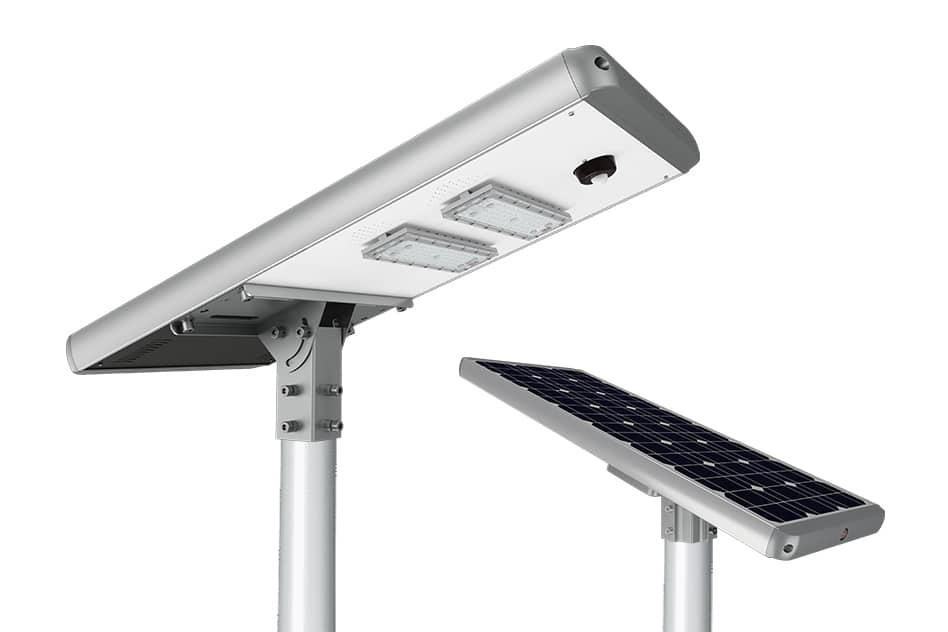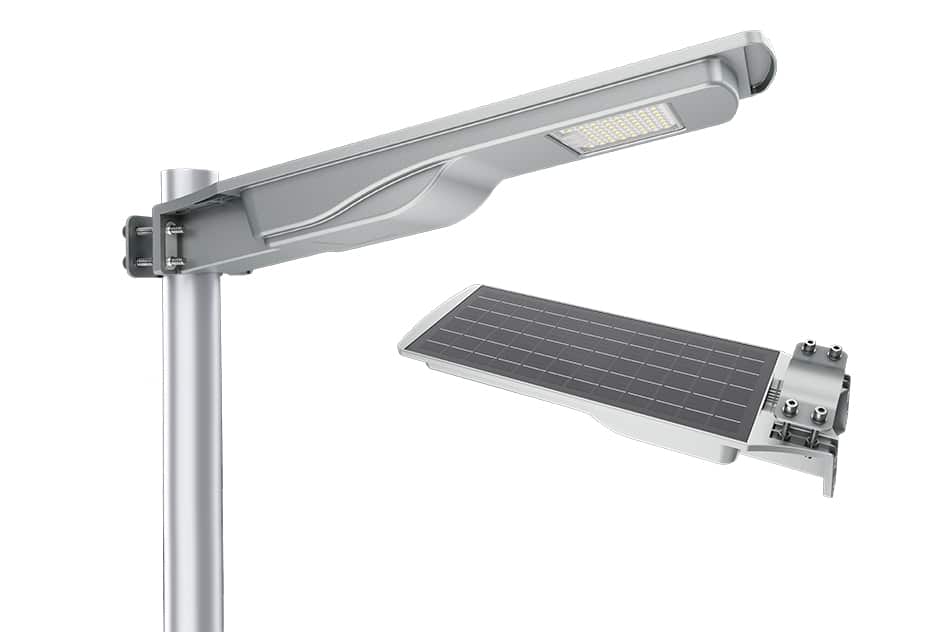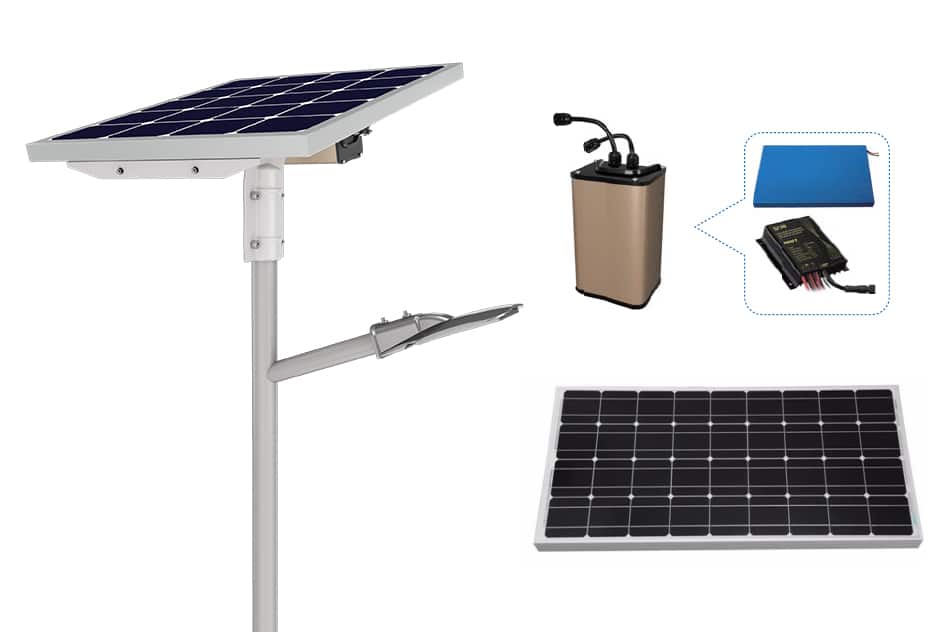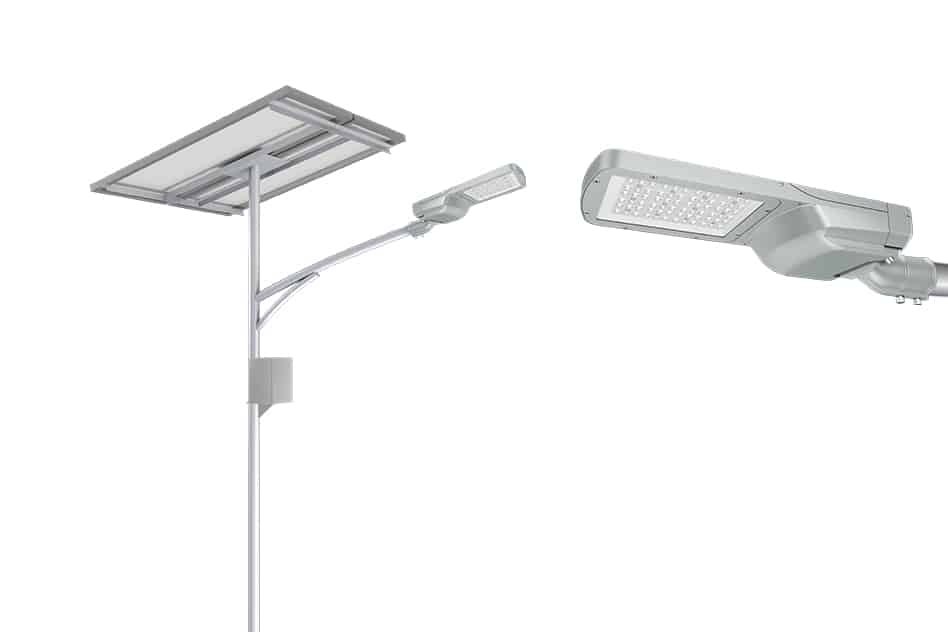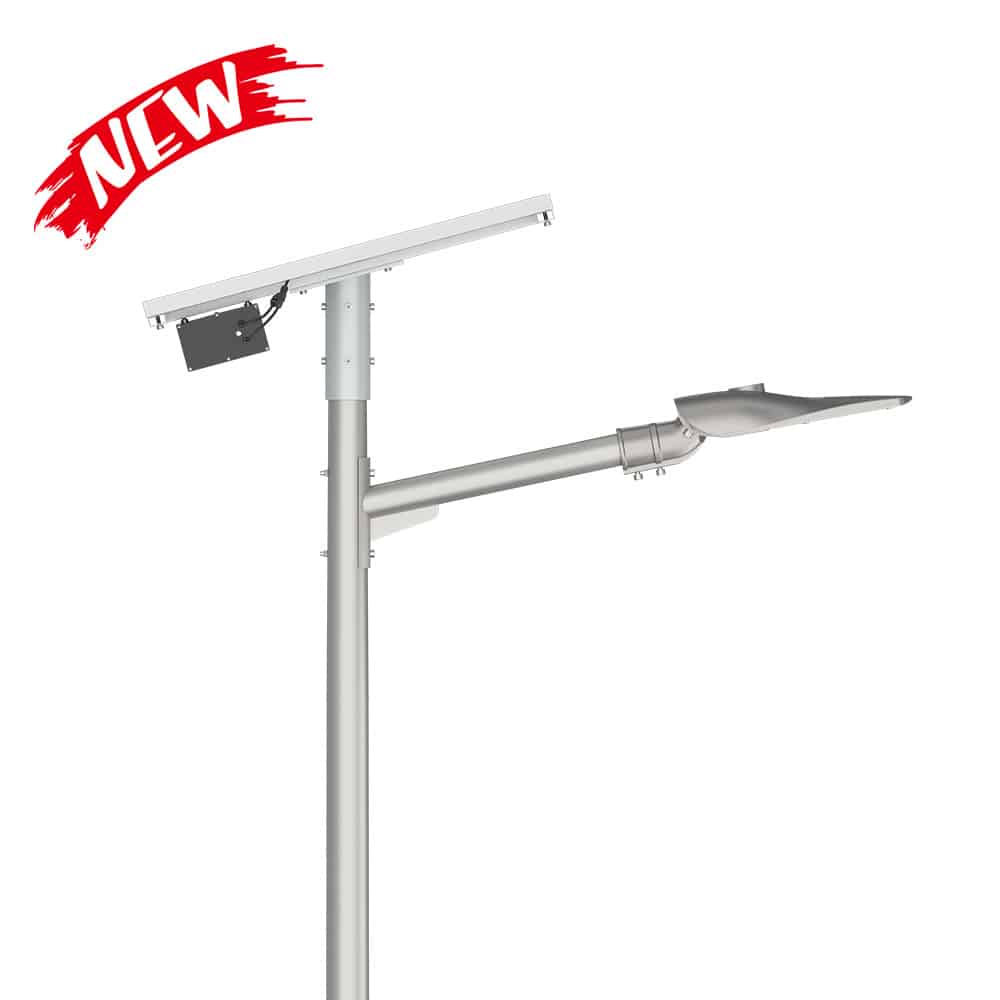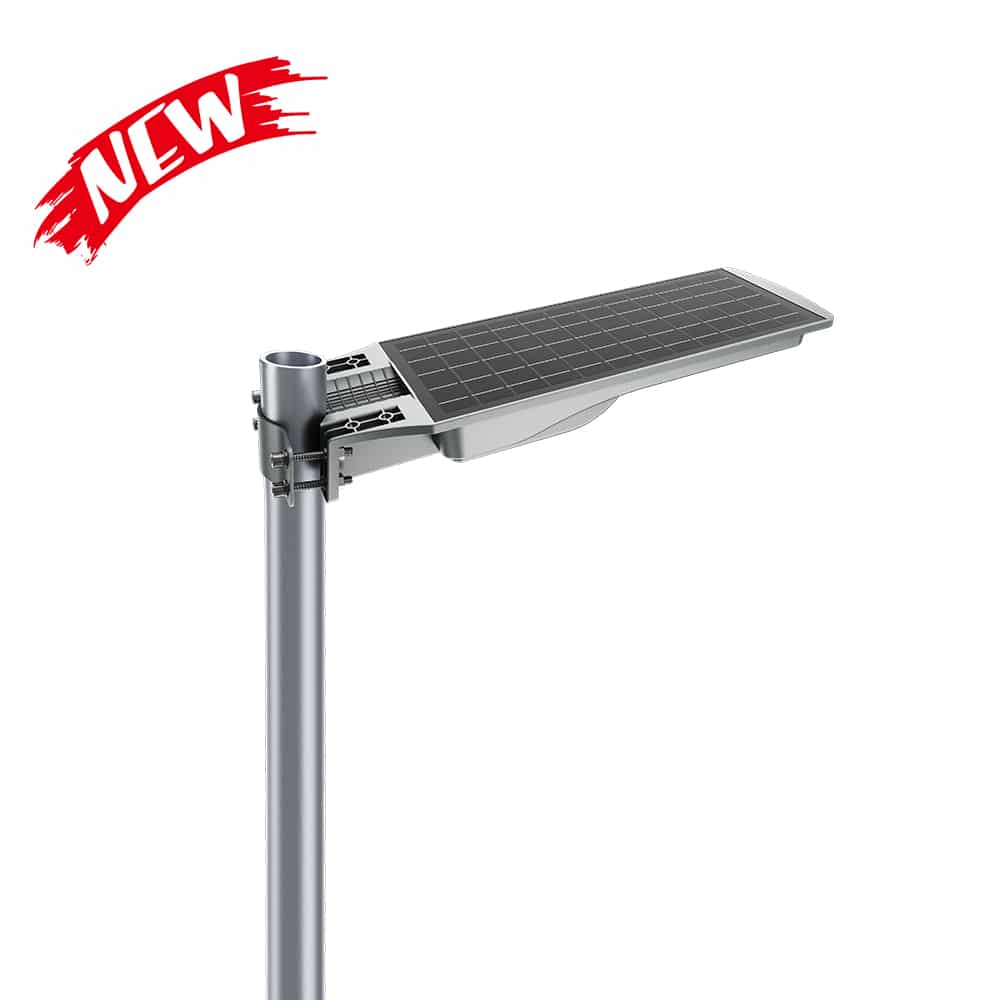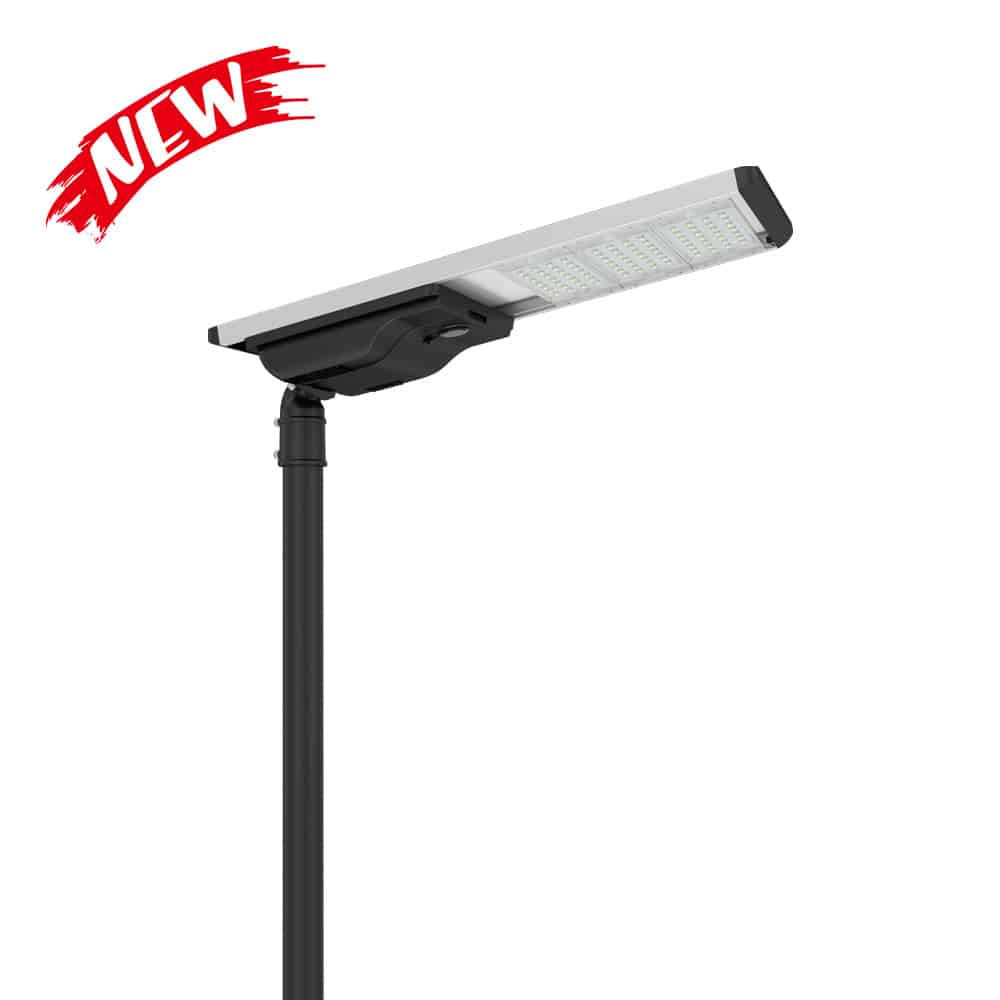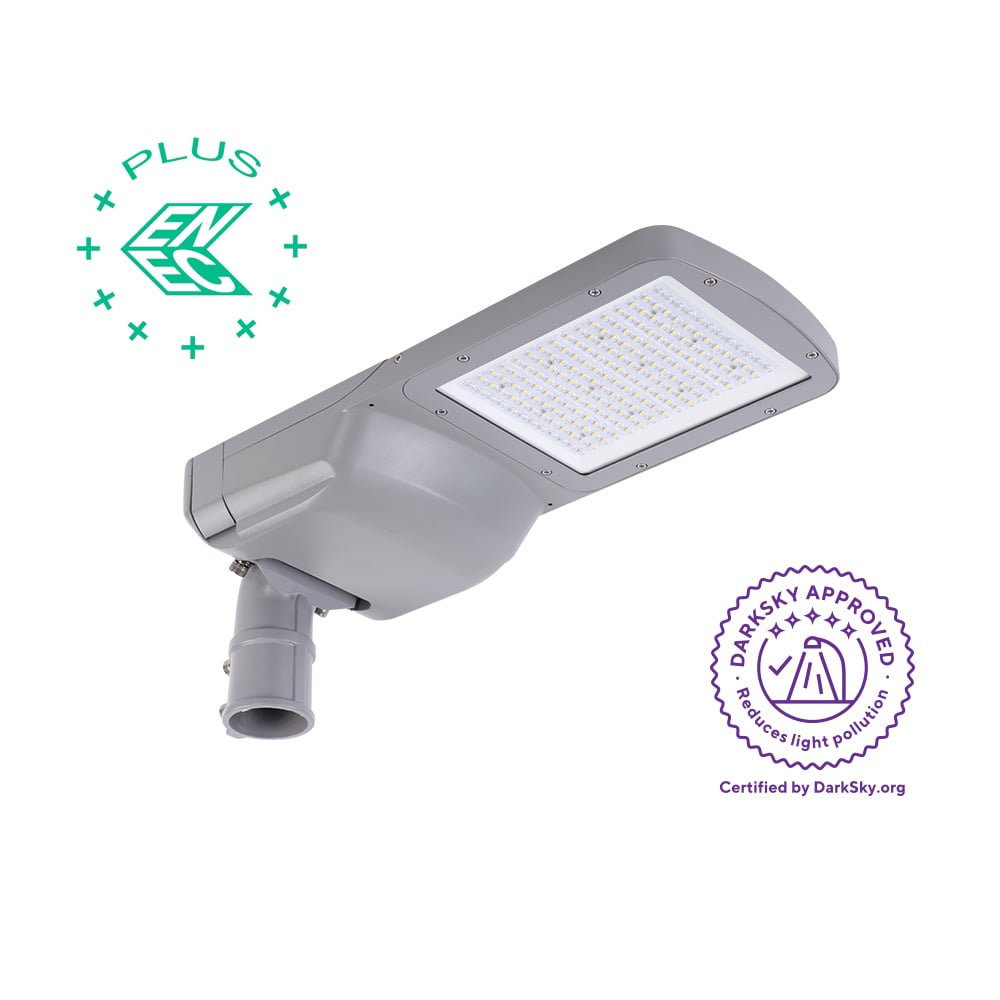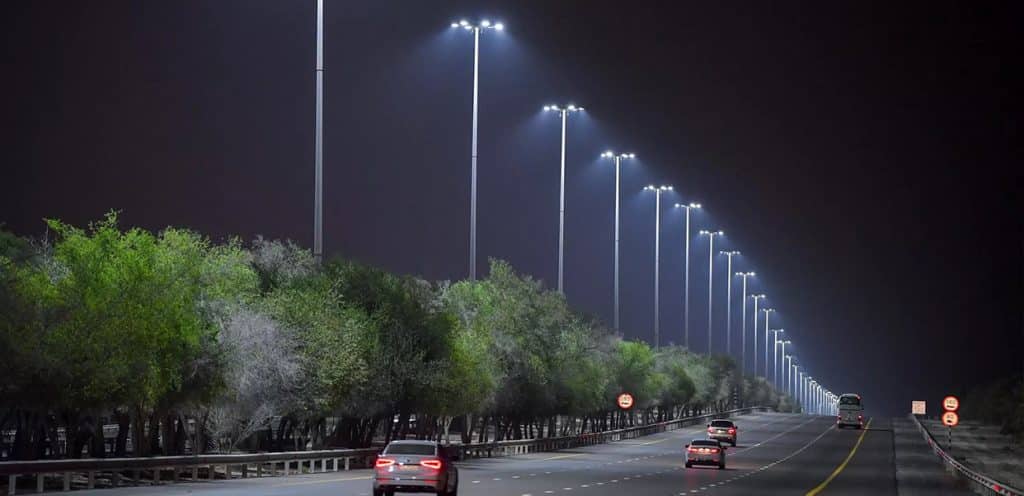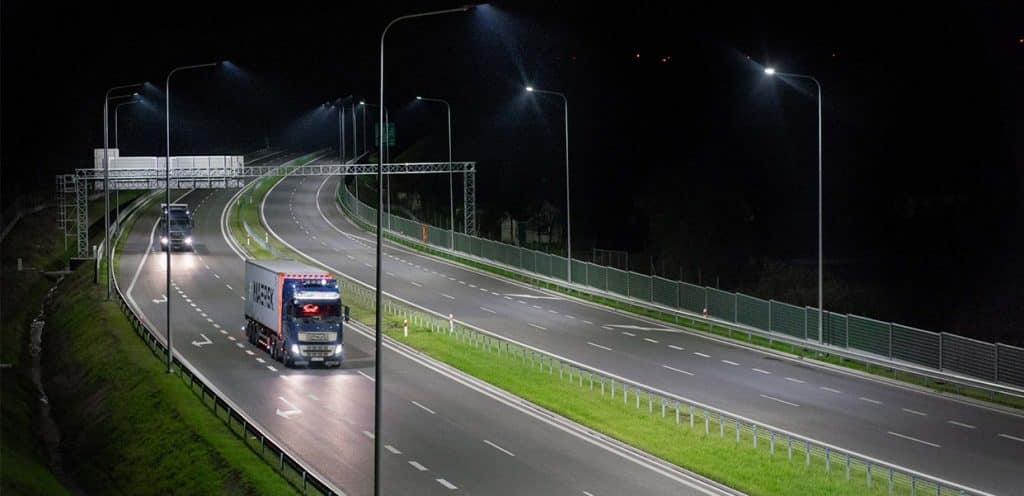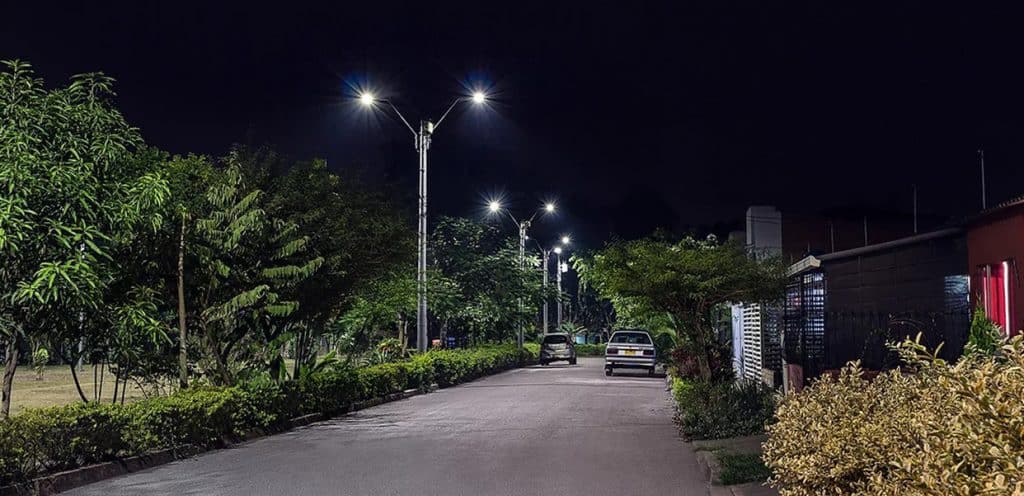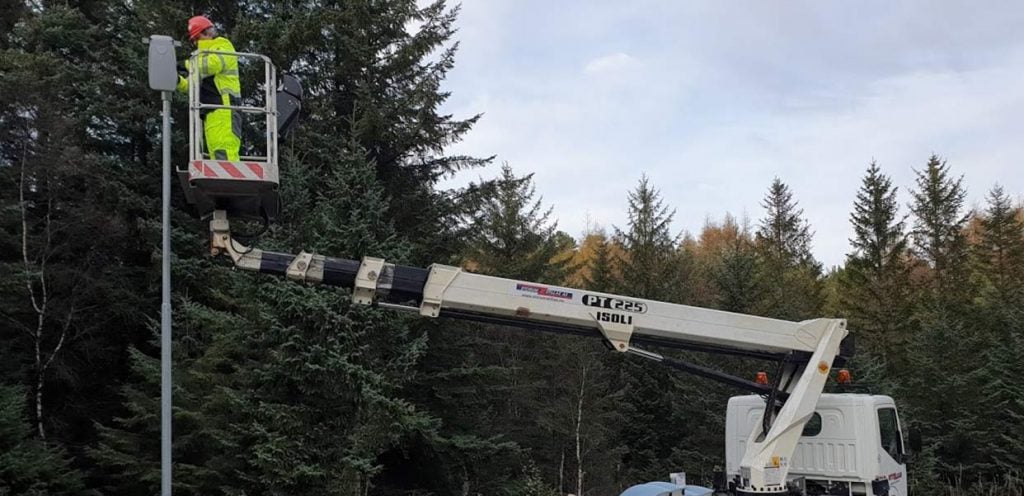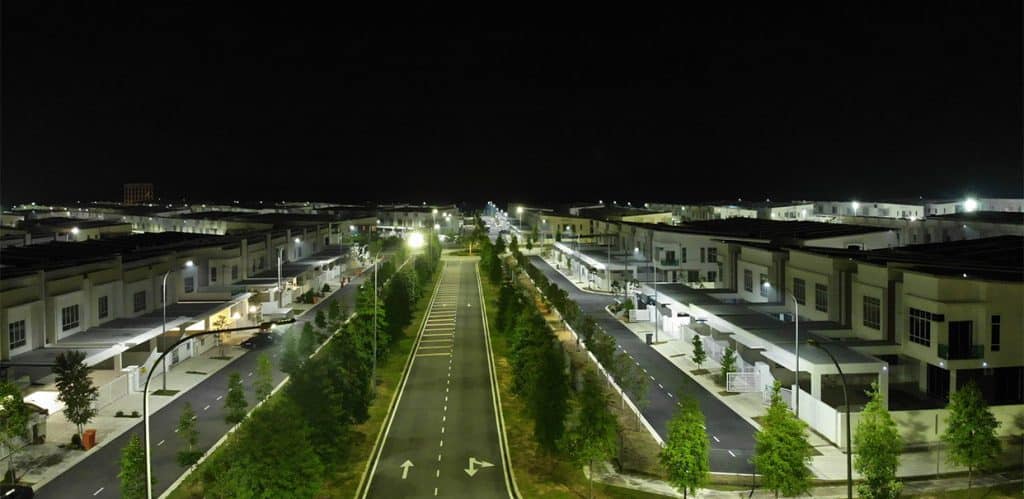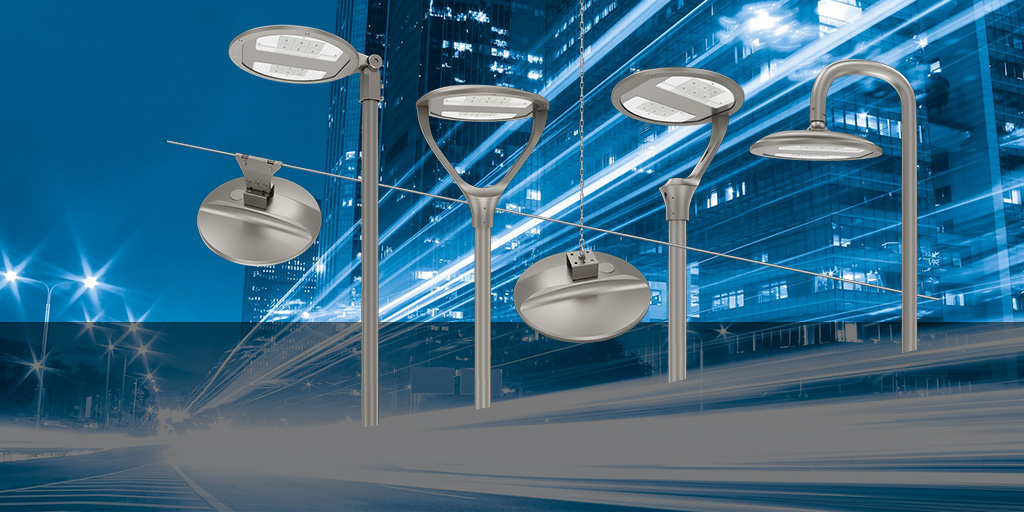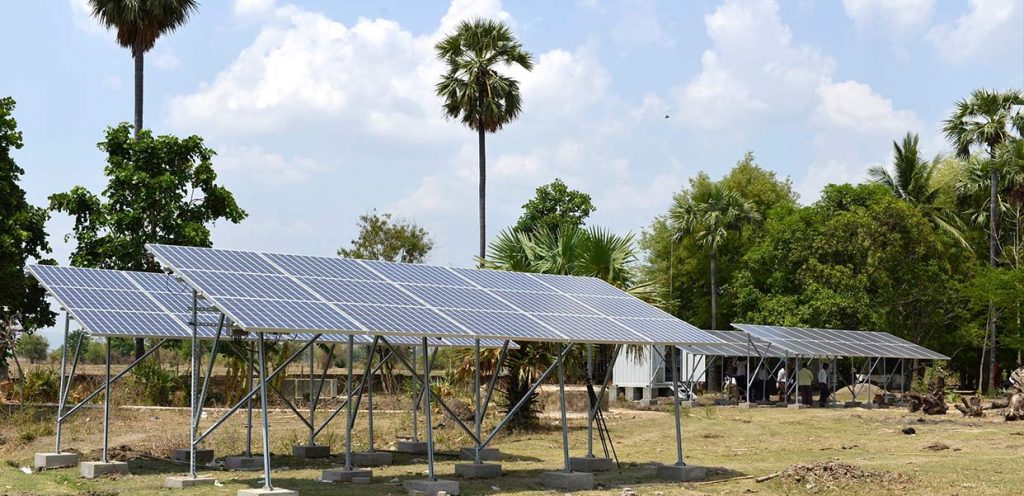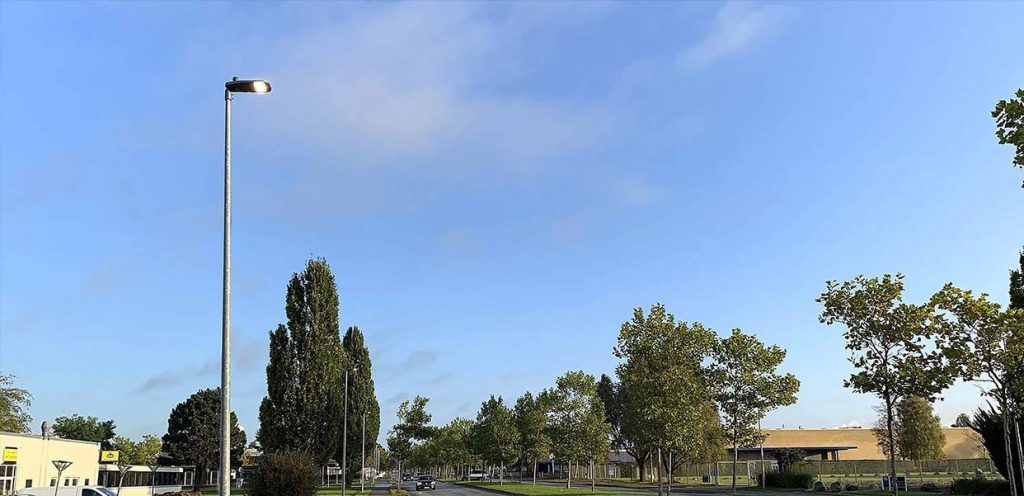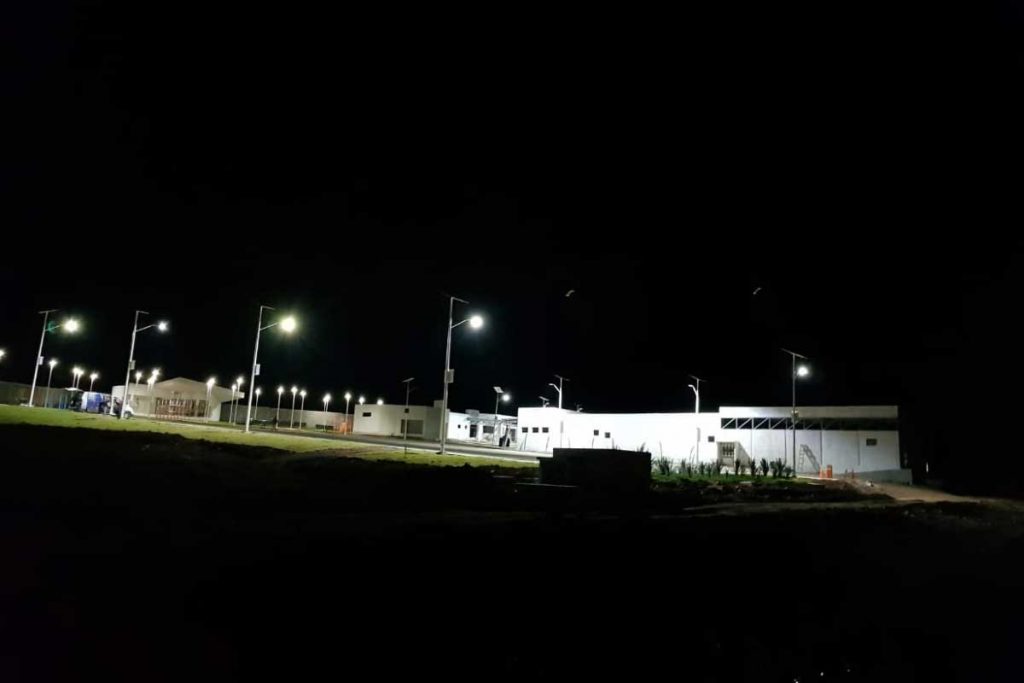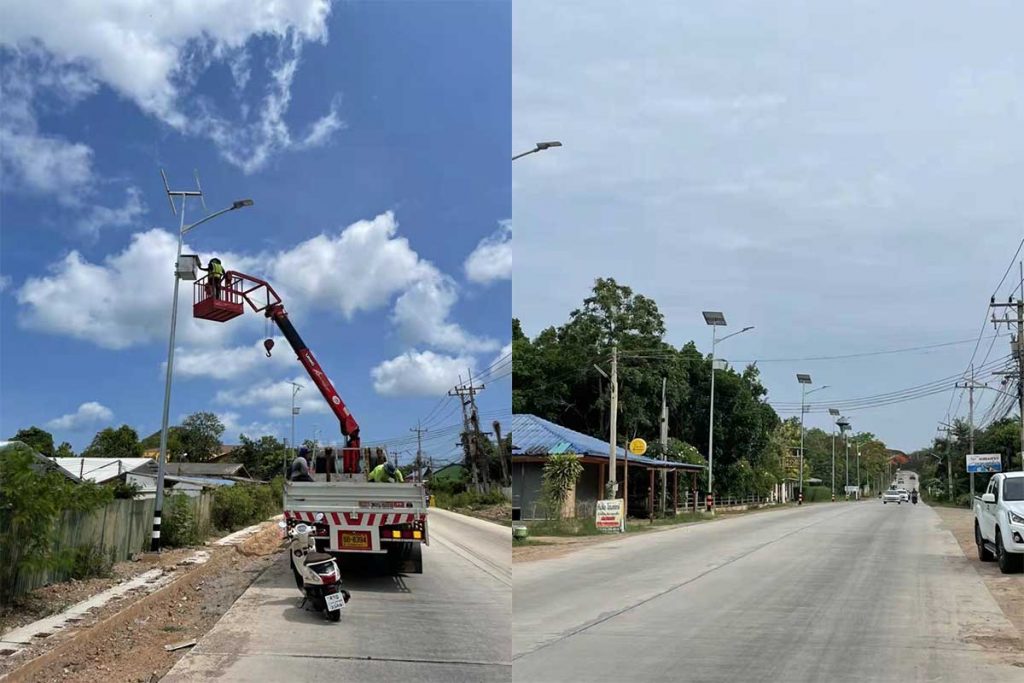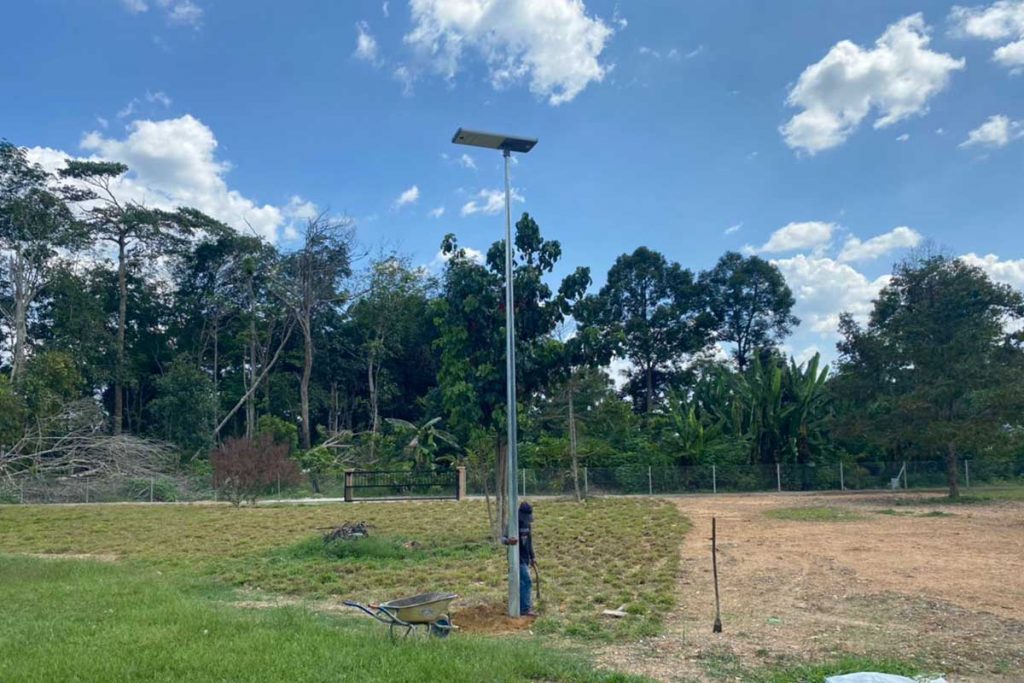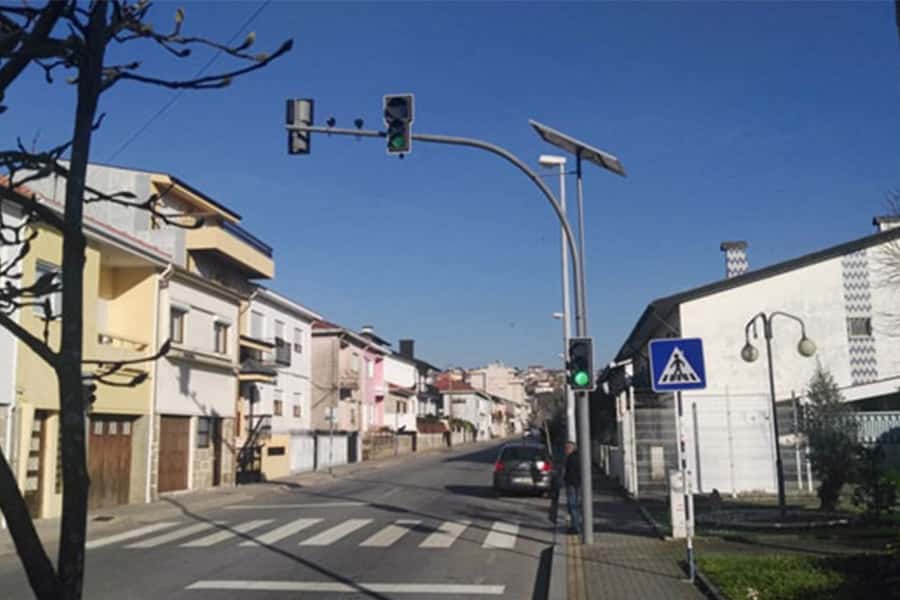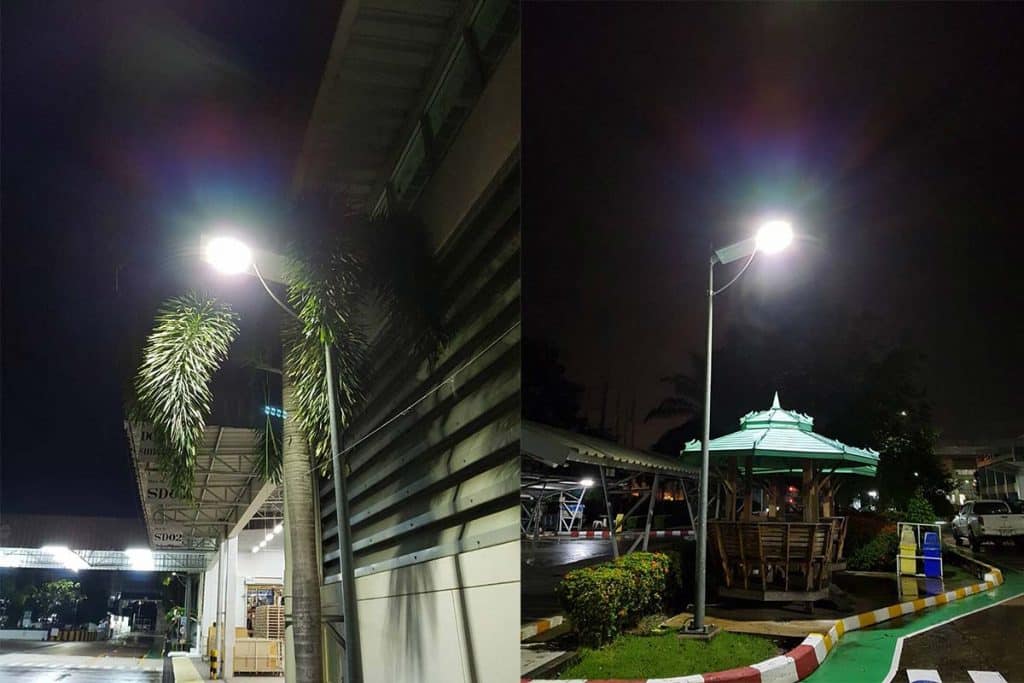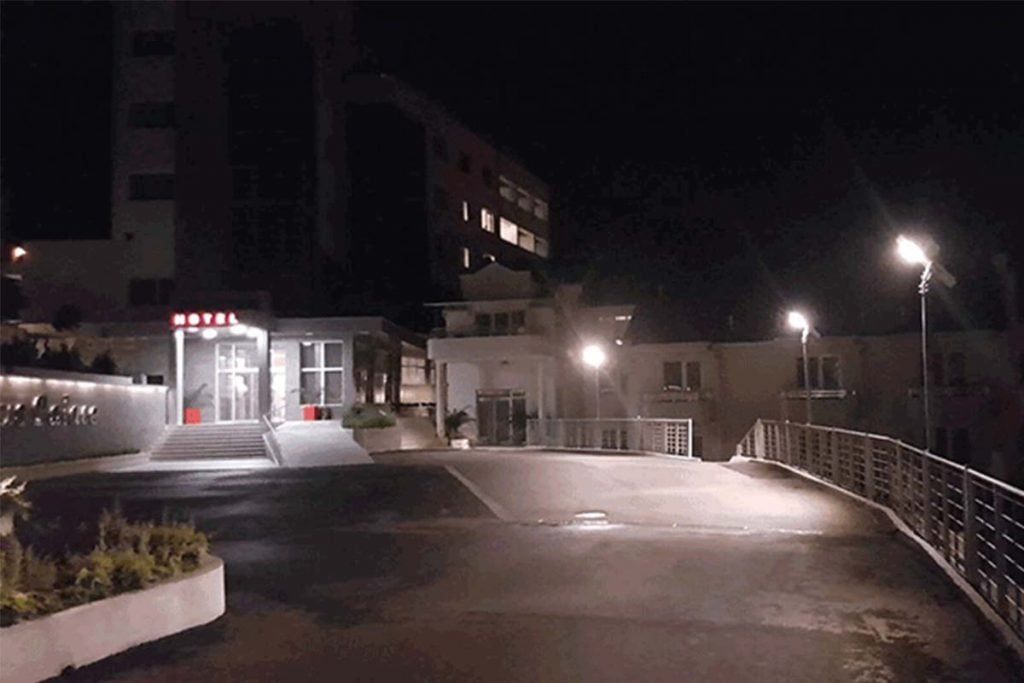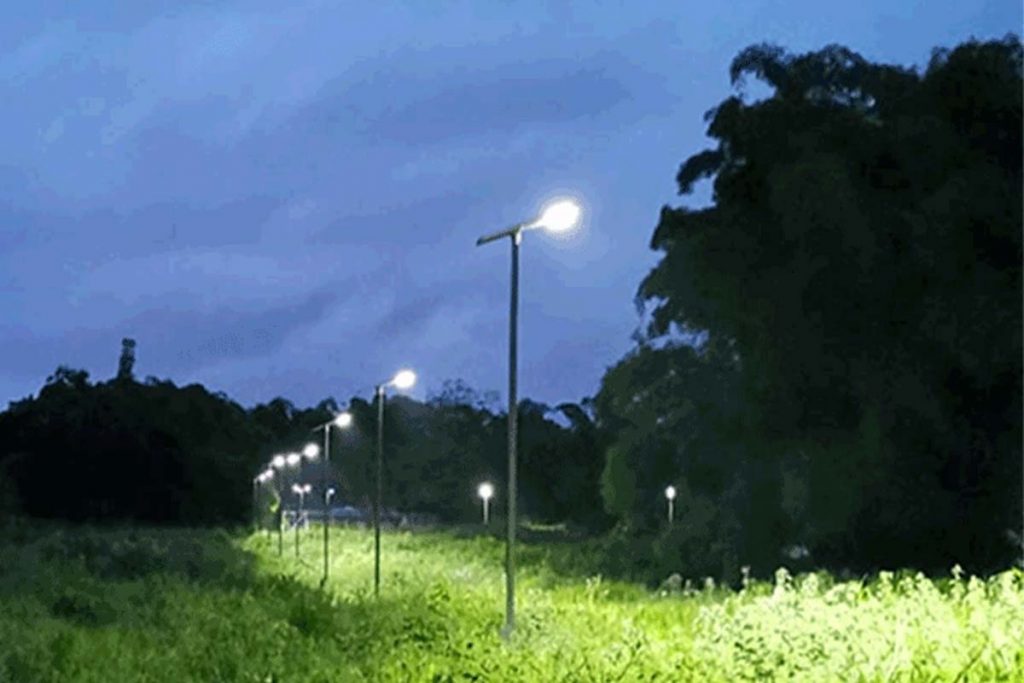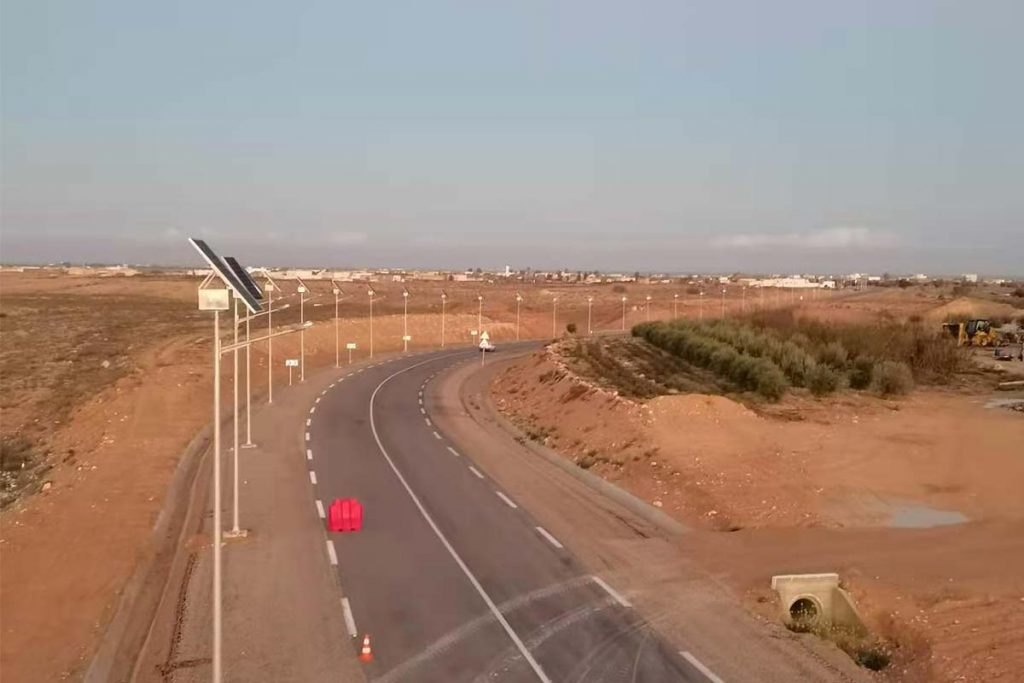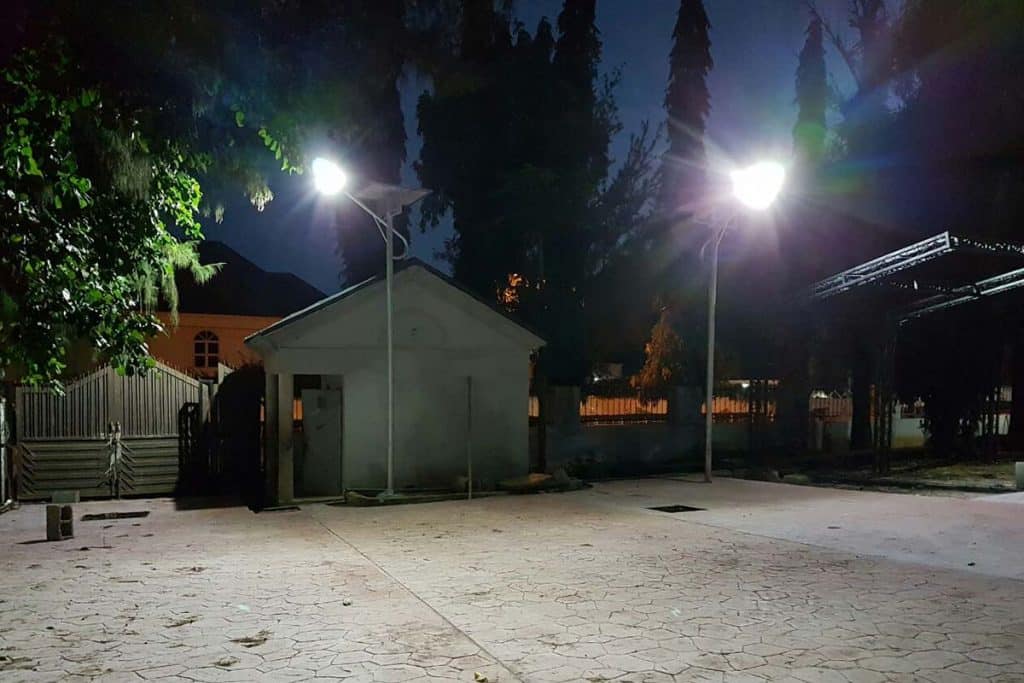Smart solar street light – built-in system or wireless control
Introduction
Solar street light is an important part of municipal street lighting just like standard AC LED street lights. The reason why it is liked and widely used is that it does not need to consume the precious resource of electricity. In recent years, due to the development of urbanization and population growth, the demand for electricity from households and governments has increased, causing resource shortages to become more and more serious. Traditional sources of electricity (oil and coal) cannot meet the growing demand. Studies have shown that most of the electricity (about 70%) is used for urban development, and a large part of the electricity is consumed by municipal street lights. Therefore, renewable clean energy sources such as solar energy, wind energy and tidal energy are gradually paid attention to.
In order to reduce power consumption, solar energy is used to power street lamps. The main principle is to convert solar energy into electrical energy through solar panels and store it in batteries. At night, the electrical energy in the batteries supplies power to street lamps to illuminate the road. Although solar street lights can help to save electricity consumption, 100% lighting output throughout the night will quickly deplete the energy stored in the battery. Designers have to spend more to use larger solar panels and batteries to power street lights to ensure that street lights provide continuous lighting at night, otherwise the dark environment is very dangerous for pedestrians and drivers. Now smart solar street lights adopt intelligent control system to achieve further energy saving. Timer dimming, motion sensors and wireless controls are all used to control the output of street lights at night. Through these smart control methods, street lamps can be turned on and off in due time, dimming up or down lamps according to ambient light and road usage conditions. This will ultimately reduce the consumption of electricity and social resources, and achieve more green and environmentally friendly lighting. In this article we will talk about the application and benefits of smart control in solar street lights.

Benefits of smart solar street light
Reasonable use of lighting to reduce light pollution
Smart solar street light ( Smart solar street lighting with Zhaga Socket and LoRaWAN ) can provide lighting when needed, dim or turn off the lights in the middle of the night when the traffics(cars and pedestrians) gradually decrease, and finally gradually increase the brightness of the lights in the early morning when the city begins to come alive. Through smart solar street lighting, it can illuminate the road when necessary, while reducing the impact of solar street lighting which isn’t necessary on the environment.
Extend lifetime of street lamps and batteries
Through the lighting control, the smart solar street light does not have to be in a 100% working status all the time. It is very friendly to LEDs and power supplies. The reasons are: 1. working at reduced power can reduce the accumulation of heat and prolong the life of the lamp. 2. Reduced power operation can reduce battery power consumption and prolong battery life. We know that the life of the battery is related to the cycle number of charge and discharge, and also the depth of charge and discharge. If the battery needs to power the lamp for a long time, the battery will quickly reach the specified cycle number of charge and discharge. At the same time, the power reduction work makes the battery not need to be deeply discharged, which is very helpful to prolong the battery life.
Reduce configuration of solar street light to reduce cost
Smart control greatly reduces the power consumption of the solar street lighting system during a working cycle. This will make the configuration of batteries and solar panels in the system not as high as before. Through reasonable control, the cost of the whole set of solar street lights will be reduced a lot, because the battery and solar panels of solar street lights account for about 80% of the total cost of solar street light.
Green and environmental protection – good development prospects
The initial construction cost of solar street lights is much higher than that of standard AC street lights, which hinders its development to a certain extent. Under the premise of reducing the configuration of batteries and solar panels, the cost of smart solar street light can be well controlled. In addition, as energy costs continue to increase, the payback period of solar street lights is becoming shorter and shorter. Meanwhile, wireless control can effectively monitor solar street lights. We think this green and environmentally friendly solution may become more and more popular through the reasonable management of the municipal construction team.
Smart solar street light with built-in control system
Under standard conditions, solar street lights can switch on or off by themselves without additional light control methods. Its realization principle is: the solar controller can receive the output voltage (or charging voltage) of the solar panel, and it determines the switch operation of the solar street lamp by checking the charging voltage. The output voltage of the solar panel (the charging voltage of the controller) is determined by the brightness of the sunlight. When the brightness of sunlight is low, the charging voltage of the solar controller is low, then the solar street lamp will be turned on. As the brightness of the sunlight gradually increases, the charging voltage of the solar controller also increases, and the controller will turn off the solar street light.
Switching on or off lamps is the simplest way to control solar street lights, so how can we manage solar street lights more intelligently? ZGSM believes that through the built-in smart solar controller or the method of installing sensors, it can be divided into three categories.
Solar street light in sunny day
In this situation, solar street lights will work from dusk to dawn. Through the built-in functions of the controller, we can set time-based dimming to achieve better energy saving. The basis is that after midnight, there will be fewer vehicles and pedestrians, and the illuminance can be lower accordingly according to lighting requirements. From the lighting dimming curve in the figure below, we can see that the power consumption of the battery is significantly reduced in this mode. Then the saved power can be stored for rainy days. In this mode, the dimming curve can be set to 4-5 gradients. For example: the light is 80% on within 1 hour after turning on the light, the light is 100% on for the rest of the first half of the night. And the light is 30% on from 0:00 to 4:00. In the morning, we can increase the brightness to 100% to welcome the morning 1 – 2 hours of small rush hour traffic.

Solar street light in rainy day
Solar street lights charge their batteries through solar panels during the day. But in cloudy or rainy days, solar street lights cannot be effective or stop converting solar energy into direct current and storing them in batteries. This will inevitably shorten the lighting time at night, or even completely fail to provide lighting. In order to solve the problem that the conversion rate of solar energy is low in rainy days and cannot supply power to street lamps at night, solar street lights will deliberately increase the capacity of panels and batteries at the beginning of design, so as to store electricity as much as possible when the intensity of sunlight is good in sunny day for supplying power to lamps in rainy days. If going with this solution, the cost of solar street lights will become very high. Is there a suitable solution for this?
Intelligent solar control is currently the mainstream solution for solar controllers. It can automatically adjust the load power (street lamp power) according to the capacity of the battery. And when used with time-based dimming, the system will select the appropriate output power between the automatically adjusted power and the user-set power. For example: when the battery capacity is less than 40%, the intelligent controller think the proper load power is 60%. If the user sets 100% load power at this time, the final output is 60%. While if the user sets 20% load power at this time, the final output of solar street light is 20%.

Solar street light with motion sensor
In the first two solar street lighting solutions, adjusting the output of solar street lights is mainly realized by timer dimming and cooperating with the controller to detect the capacity of the battery. They cannot adjust the output of street lights based on the real-time usage of the traffic, while solar street light with motion sensor can detect motion/pedestrians within its range. If the motion sensor senses the presence of motion, it will give a signal to the LED driver or controller (usually a 0-10V dimming signal), so that the LED driver or controller can increase the power of the lamp to meet the needs of pedestrians or drivers. When the motion sensor does not sense the presence of motion/pedestrians, it will send a 5V, 3V or lower 0V signal to the power supply or controller, which requires the lamp to work at 50% or 30%, or even completely cut off the lamp output. By installing a motion sensor, we can adjust the light output very efficiently and save battery power consumption. It makes solar street lights smarter and more environmentally friendly, while reducing the cost of lamps.

Smart solar street light with wireless control
Wireless control is another intelligent control way of smart solar street lights. We have introduced Zigbee and LoRa wireless control methods in detail before in the smart control of street lights. This is almost same wireless control methods which can be used in solar street lights. It is a major way to reduce public energy consumption, while allowing easy management of individual lamps and public lighting as a whole. At the same time, the smart solar street light with wireless control system ( Review the case study on the street light system for a residential road. ) can integrate the Internet of Things technology, so that users can monitor and control the solar street lighting system and other urban sensors online wherever the Internet is available. The solar street light wireless control system can realize the following main functions:
- Remote turn on/off lamps: After the solar controller is connected to the wireless module, it can control the lamp to be turned on/off by issuing a turn on/off command from the remote server.
- In special cases, the controller can change the brightness/switchs of lamps. For example, turn on the lamps in advance to provide lighting in thunderstorm days. Another example is special scenes (such as important festivals) to brighten lamps to meet the lighting needs of pedestrians and motor vehicles.
- Set different scene modes. For example, different dimming profiles are set in different seasons, and we can choose different dimming profiles according to the seasons.
In summer, set the dimming profiles as follows: 100% lighting for 4 hours (19:00-23:00) after dark, then 80% lighting for 2 hours (23:00-01:00), then 50% lighting for 3 Hours (01:00-4:00), the last morning light is 80% for 2 hours (04:00-06:00).
In winter, set the dimming profiles as follows: 60% lighting for 2 hours (17:00-19:00) after dark, then 80% lighting for 4 hours (19:00-23:00), and then 30% lighting for 3 Hours (01:00-4:00), the last morning light is 50% for 2 hours (04:00-06:00).
- Real-time monitoring of the status of street lamps, and at the same time wireless system, we can know the occurrence of street lamp failures, failure locations and causes of failures online on the platform. The road manager can give timely feedback to the construction personnel for corresponding maintenance.
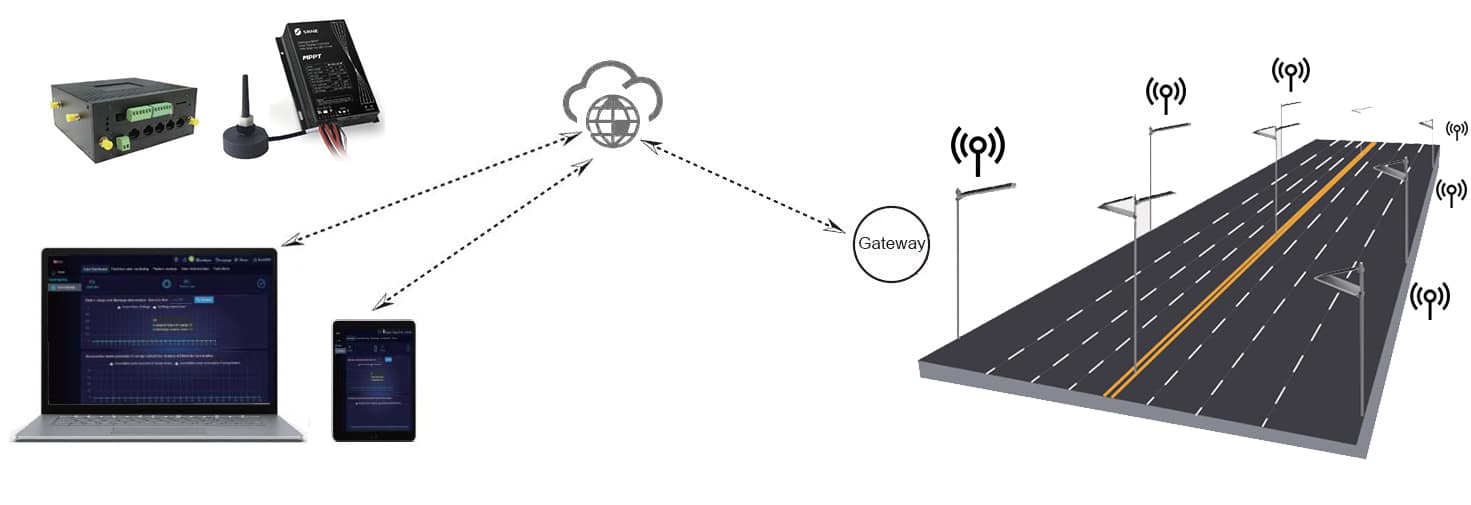
ZGSM solar street light solution
| Performance summary of PV3 series |
| Initial Lumens: Up to 12300 lumens |
| Input Power: Up to 60W |
| Efficiency: 210lm/W |
| Battery option: 10AH, 20AH, 27AH, 40AH, [email protected] |
| Solar panel option: 50W, 70W, 100W |
| Application: Parking lot, Pedestrian Areas, Rural areas, Residential |
| Performance summary of PV4 series |
| Initial Lumens: Up to 4000 lumens |
| Input Power: 10W or 20W |
| Efficiency: 200lm/W |
| Battery option: 20AH, [email protected] |
| Solar panel option: 12W, 22W |
| Application: Garden, Small parking lot, Rural areas, Road in park |
| Performance summary of N series |
| Initial Lumens: Up to 8250 lumens |
| Input Power: Up to 50W |
| Efficiency: 180lm/W |
| Battery option: 212WH, 298WH, 426WH, 512WH |
| Solar panel option: 60W, 80W, 120W, 150W |
| Application: Rural areas, Main road, Urban areas, Industrial areas |
| Performance summary of Split solution |
| Initial Lumens: Customized as per request |
| Input Power: Customized as per request |
| Efficiency: Customized as per request |
| Battery option: Customized as per request |
| Solar panel option: Customzied |
| Application: Main road, Urban areas, Industrial areas, Perimeter |
Summary
Smart solar street light is an easy-to-operate, effective and practical solution. It helps us get rid of the tedious process of manual switching, it can reduce power consumption to achieve green development, and at the same time it can reduce primary and maintenance costs. All of these make smart solar street lights have a broader application prospect. Finally, the solar street light intelligent system can be used as a key component in the development of smart city infrastructure, and can be used to provide extended functions, such as camera monitoring, traffic management, environmental protection, weather monitoring, WIFI, etc. With the development of technology, we believe that these technologies can be well applied to solar lighting systems in the future, and at the same time promote the application of solar street lights.
Rated Products
Related Blogs
Related Cases
People also ask
Author introduction

Hello Customers,
My name is Taylor Gong, I’m the product manager of ZGSM Tech. I have been in the LED lights industry for more than 13 years. Good at lighting design, street light system configuration, and bidding technology support. Feel free to contact us. I’m happy to provide you with the best service and products.
Email: [email protected] | WhatsApp: +8615068758483

